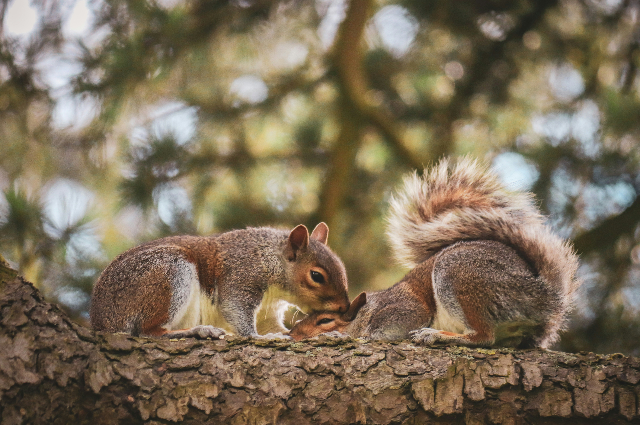
Wildlife protection is a crucial endeavour that requires collective efforts and proactive measures. In the United Kingdom, a land rich with diverse ecosystems, this task is both a responsibility and a privilege. From the rolling countryside to urban green spaces, Britain is home to myriad species that play vital roles in maintaining ecological balance. This article delves into the various facets of wildlife protection in Britain, highlighting key strategies, significant challenges, and inspiring success stories.
The Importance of Wildlife Protection:
Understanding why wildlife protection is essential is the first step towards fostering a more sustainable and harmonious coexistence with nature. Biodiversity supports ecosystem health, providing critical services such as pollination, water purification, and climate regulation. Moreover, wildlife contributes to cultural heritage, education, and recreation, enriching human lives in countless ways. Protecting wildlife is not just about saving animals; it is about preserving the intricate web of life that sustains our planet.
Legal Frameworks and Conservation Policy:
The United Kingdom has implemented several robust legal frameworks aimed at protecting wildlife. The Wildlife and Countryside Act 1981 is a cornerstone piece of legislation that protects various species and their habitats. Additionally, the Countryside and Rights of Way Act 2000, and the Conservation of Habitats and Species Regulations 2017, align UK law with European directives. These laws provide a structured approach to conservation, ensuring that development and human activities do not compromise the natural environment.
Key Organisations in Wildlife Protection:
Numerous organisations play pivotal roles in wildlife conservation across the UK. The Royal Society for the Protection of Birds (RSPB) is one of the largest, focusing on bird species and their habitats. The Wildlife Trusts, a federation of independent charities, manage over 2,300 nature reserves, safeguarding a wide range of species. Additionally, Natural England and the Scottish Natural Heritage work tirelessly to implement government policies and monitor wildlife health. These organisations collaborate with local communities, raising awareness and fostering stewardship.
Threats to British Wildlife:
Despite concerted efforts, British wildlife faces numerous threats. Habitat loss due to urbanisation and agriculture is a primary concern, leading to fragmented ecosystems and reduced biodiversity. Climate change exacerbates these issues, altering habitats and affecting species' survival. Pollution, particularly from plastics and chemicals, poses severe risks to marine and terrestrial life. Furthermore, invasive species disrupt local ecosystems, outcompeting native flora and fauna. Addressing these threats requires innovative strategies and sustained commitment.
Success Stories in Conservation:
There are numerous inspiring success stories in British wildlife conservation that highlight the potential for positive change. The reintroduction of red kites in England and Scotland stands out as a remarkable achievement. Once on the brink of extinction, these majestic birds of prey have made a significant comeback, thanks to targeted conservation efforts. Similarly, the recovery of the otter population, facilitated by improved water quality and habitat protection, showcases the impact of dedicated environmental stewardship. These successes demonstrate that with collective effort, wildlife can thrive.
The Role of Technology in Wildlife Protection:
Advancements in technology have revolutionised wildlife protection strategies. GPS tracking and satellite imagery enable precise monitoring of animal movements and habitat changes. Drones are increasingly used for surveying difficult-to-reach areas, providing valuable data for conservation planning. Additionally, camera traps and acoustic monitoring systems offer insights into elusive species' behaviours. These technological tools enhance our understanding and capability to protect wildlife more effectively.
Community Involvement and Education: Community involvement is vital for the success of wildlife protection initiatives. Local communities often possess valuable knowledge about the ecosystems they inhabit, making them indispensable partners in conservation efforts. Education plays a crucial role in this regard, fostering a sense of responsibility and connection to nature. Schools, community groups, and volunteers can participate in citizen science projects, contributing to data collection and conservation activities. By engaging the public, we can create a widespread culture of conservation.
The Future of Wildlife Protection in the UK:
Looking ahead, the future of wildlife protection in the UK hinges on adaptive and forward-thinking strategies. Integrating wildlife corridors into urban planning can mitigate habitat fragmentation, providing safe passages for animals. Strengthening partnerships between government, non-profits, and private sectors will enhance resource mobilisation and innovation. Moreover, promoting sustainable agricultural practices will reduce the negative impacts of farming on wildlife. By embracing these approaches, we can build a resilient and thriving natural environment.
How Individuals Can Contribute:
Every individual has the power to make a difference in wildlife protection. Simple actions such as creating wildlife-friendly gardens, reducing plastic use, and supporting conservation charities can have a significant impact. Educating oneself and others about the importance of biodiversity and the threats it faces is equally important. Participating in local conservation projects or citizen science initiatives can also contribute to broader efforts. By making conscious choices and taking proactive steps, we can all play a part in safeguarding Britain's wildlife.
Conclusion:
Wildlife protection in the UK is a multifaceted endeavour that requires concerted efforts from all sectors of society. The richness of Britain's natural heritage is a testament to the success of past conservation efforts, but ongoing challenges demand continuous action. By understanding the importance of wildlife, supporting legal frameworks and organisations, mitigating threats, leveraging technology, involving communities, and looking towards the future, we can ensure that Britain remains a haven for wildlife. Each of us has a role to play in this critical mission, and together, we can make a lasting impact.
